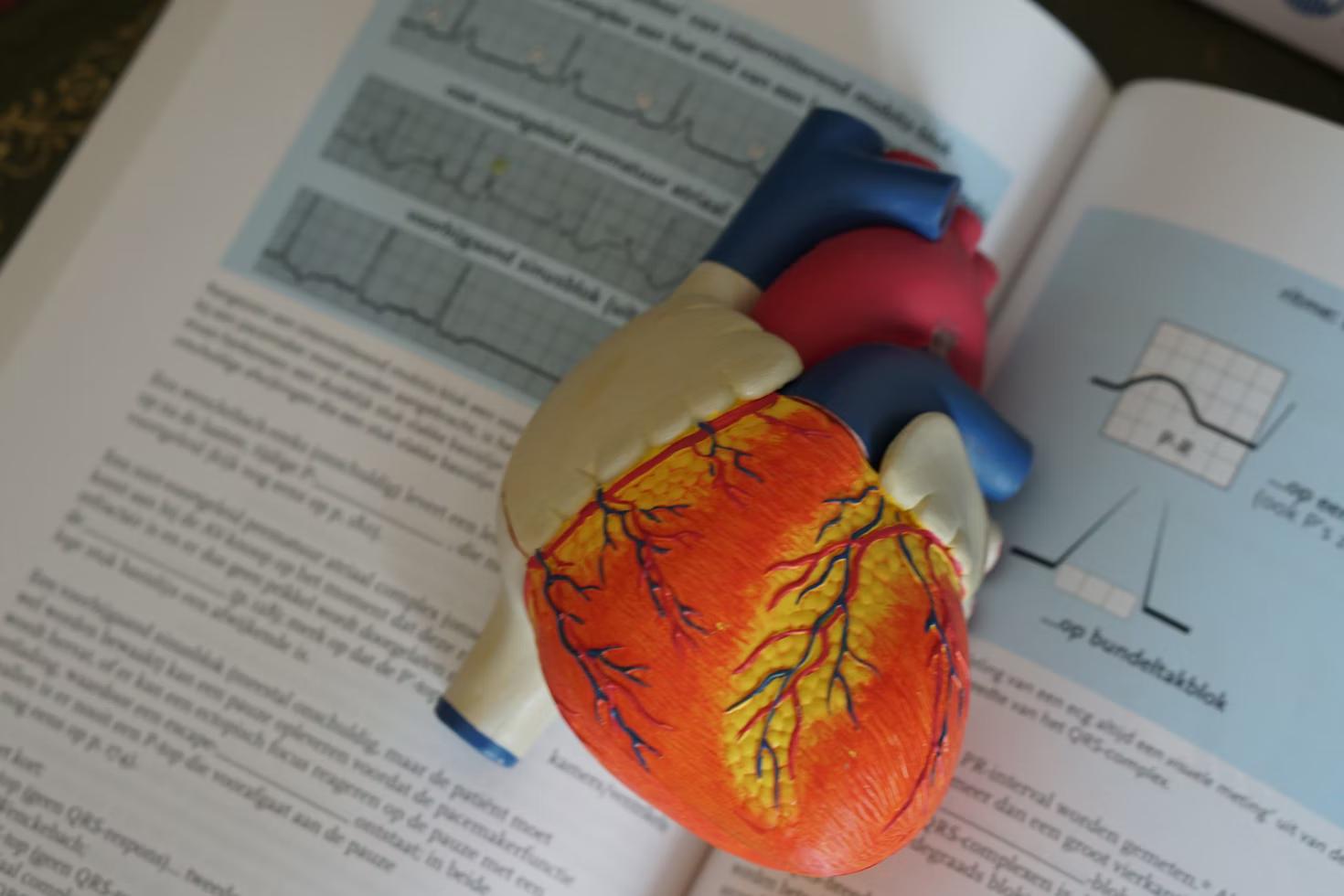In our quest for optimal health and well-being, understanding the diverse aspects of health-related fitness becomes crucial. Often, we limit our fitness goals to a singular dimension, overlooking the holistic approach that promises a more balanced and fulfilling lifestyle. Health-related fitness encompasses more than just the ability to run a marathon or lift heavy weights; it’s about nurturing the body through a blend of strengths, each serving its unique role in promoting overall health.
This holistic perspective divides fitness into five key components: strength, flexibility, endurance, body composition, and cardiovascular fitness. Each component plays an essential part in achieving a state of well-being that transcends physical appearances, connecting deeply with our mental and emotional health. As we explore these vital elements, remember that incorporating a mix of these components can lead to a more balanced, health-conscious lifestyle.
The Significance of Strength:

Strength, often perceived merely as an athlete’s attribute, extends way beyond the realm of sports. It forms one of the fundamental pillars of health-related fitness, emphasizing not only the performance enhancements but also the overall quality of daily life. Strength doesn’t exclusively refer to how much weight one can lift or the muscle mass one possesses; it also encompasses the ability to withstand physical and mental adversity, thereby playing a pivotal role in maintaining a balanced and healthy lifestyle.
Definition and Importance of Strength in Health-Related Fitness
Strength, in the context of health-related fitness, can be defined as the capacity of an individual’s muscle or a group of muscles to exert force against resistance under a specific set of conditions. This capability is crucial not only for performing everyday tasks with ease but also for the prevention of injuries. Adequate strength levels contribute to a healthier body composition by increasing muscle mass and reducing fat percentage, which in turn boosts metabolism and aids in weight management. Furthermore, it imparts mental benefits by enhancing self-esteem and reducing symptoms of anxiety and depression. The importance of strength is thus multidimensional, impacting physical health, mental well-being, and the overall quality of life profoundly.
The Role of Flexibility:
Flexibility is another core component of health-related fitness that often doesn’t receive the recognition it deserves. In a world that increasingly demands sitting for prolonged periods, the significance of flexibility becomes even more pronounced. Flexibility pertains to the ability of the joints to move through their full range of motion. This key component not only contributes to the efficient performance of everyday activities but also plays an essential role in injury prevention and the overall functionality of the body.
Understanding Flexibility and Its Impact on Overall Fitness
Flexibility is characterized by the range of motion available at a joint or a group of joints, influenced by the length and elasticity of muscles, tendons, and ligaments surrounding them. It is vital for maintaining a balanced musculoskeletal health, ensuring that the body moves efficiently and safely during physical activities.
A high degree of flexibility improves postural alignment and balance, aiding in the prevention of back pain and other musculoskeletal issues. It also enhances agility, making it easier to perform a wide array of physical activities, from tying shoelaces to engaging in sports. Moreover, flexibility exercises like stretching have been shown to reduce stress and tension in the body’s muscles, offering a soothing effect on the mind and promoting relaxation.
The impact of flexibility on overall fitness and well-being is immense. It ensures that individuals can perform various physical activities with ease, contributing to their ability to engage in a more active and healthy lifestyle. Additionally, it supports muscular health and prevents injuries, underscoring its significance in the broader context of health-related fitness.
Together, strength and flexibility illustrate the diverse components that contribute to our overall fitness and well-being. Both elements play critical roles not just in enhancing our physical capabilities but also in improving the quality of our daily lives through injury prevention, mental health benefits, and the promotion of a more active lifestyle. Understanding and integrating these key components into our fitness routines can lead to profound improvements in our health and overall quality of life.
Endurance: Building Stamina
Endurance is a crucial component of health-related fitness, vital for performing daily activities with vigor and for excelling in various physical endeavors. It’s the fuel that powers us through marathons, yes, but also through the marathon of life’s daily tasks. Endurance can be categorized into two main types: cardiovascular endurance, which involves the efficient functioning of the heart and lungs, and muscular endurance, which focuses on a muscle’s ability to perform repeated contractions over time without fatigue.
Examining the Importance of Endurance in Health and Fitness
Why is endurance so vital? For starters, it directly impacts your ability to carry out everyday activities with ease, from climbing stairs to chasing after a bus. On a health spectrum, high levels of endurance are linked with a lower risk of chronic diseases such as heart disease, diabetes, and obesity. It’s about more than just lasting longer; it’s about living a fuller, healthier life.
Enhanced endurance capacity also translates to better heart health, as it improves circulation, reduces blood pressure, and increases the heart’s efficiency. Furthermore, in the realm of mental health, pushing through physical limits to improve endurance can boost confidence, reduce stress, and enhance overall well-being.
Tips for Improving Endurance Levels
Improving your endurance is a journey that requires patience, persistence, and smart strategies. Here are some tips to enhance your endurance levels effectively:
- Start slowly and gradually increase the intensity of your workouts. Rushing into intense exercise can lead to burnout or injury.
- Mix up your workout routines. Incorporate a blend of aerobic exercises like running, swimming, or cycling with strength training to build overall stamina.
- Consistency is key. Aim for regular exercise, with a minimum of 150 minutes of moderate aerobic activity or 75 minutes of vigorous activity each week, as recommended by health authorities.
- Hydration and nutrition cannot be overlooked. A well-hydrated body and a balanced diet fuel your workouts and assist in recovery.
- Lastly, allow your body ample time to rest and recover. Overtraining is a real concern and can hinder progress towards better endurance.
Body Composition: The Balance of Health
Body composition, the muscle, fat, bone, and water percentages within your body, is a nuanced and critical aspect of health-related fitness. It paints a clearer picture of health than weight alone, offering insights into a person’s fitness level and health risks.
Analyzing the Impact of Body Composition on Overall Well-Being
Understanding your body composition can offer more tailored health recommendations and highlight areas that need more focus. For instance, a high proportion of body fat, particularly around the abdomen, can increase the risk of chronic diseases such as type 2 diabetes, heart disease, and certain cancers. Conversely, a healthy muscle mass can enhance metabolic rate, improve insulin sensitivity, and boost physical strength and endurance.
Improving your body composition by fostering muscle growth and reducing excess body fat can have profound effects on your overall health. It can enhance your physical performance, reduce your disease risk, improve metabolic health, and contribute to a positive self-image. It’s about finding the right balance for your body, which varies greatly from person to person, emphasizing the importance of personalized fitness plans.
Cardiovascular Fitness: Heart Health Matters

The journey toward a healthier lifestyle is incomplete without giving due diligence to cardiovascular fitness. Also known as cardiorespiratory endurance, this form of fitness is essential for the heart, lungs, and blood vessels to efficiently supply oxygen to your body during prolonged physical activity. Its significance extends beyond mere physical well-being, influencing overall health, mood, and even life expectancy.
Understanding Cardiovascular Fitness and Its Benefits
Cardiovascular fitness stands as a pillar among the components of health-related fitness, impacting not only our physical state but also our mental and emotional well-being. By engaging in cardiovascular activities, we train our body’s most vital muscle, the heart, to pump blood more efficiently, thereby enhancing oxygen distribution to our tissues and organs.
This efficiency not only aids in reducing the risk of heart disease but also plays a significant role in improving metabolism, fostering weight management, and decreasing the risk of type 2 diabetes, among other chronic diseases. Furthermore, cardiovascular fitness contributes to mental health by reducing stress, alleviating symptoms of depression and anxiety, and enhancing sleep quality and cognitive function.
Cardiovascular Exercises for a Healthy Heart
To nurture and maintain cardiovascular health, certain exercises stand out for their ability to increase heart rate and promote efficient oxygen use throughout the body. Here are a few to consider incorporating into your fitness routine:
- Brisk walking or jogging: These accessible exercises can significantly elevate the heart rate, making them a perfect starting point for beginners.
- Cycling: Whether on a stationary bike or outdoors, cycling is a low-impact way to boost cardiovascular fitness.
- Swimming: This whole-body workout is exceptional for increasing endurance while also providing resistance training benefits.
- Interval training: Alternating short bursts of high-intensity exercise with periods of rest or lower-intensity activities can dramatically improve cardiovascular fitness and metabolic health.
- Dance or group fitness classes: Offering a fun and social way to exercise, these classes can keep your heart rate up in an enjoyable setting.
Regular participation in these activities can lead to significant improvements in cardiovascular health, ultimately contributing to a healthier and potentially longer life. Whether you are just beginning your fitness journey or looking to maintain your health, understanding and prioritizing cardiovascular fitness can be a game-changer in your overall well-being strategy.
Conclusion: Integrating the 5 Components for Optimal Health and Fitness
In the pursuit of optimal health and fitness, it becomes evident that the five key components – strength, flexibility, endurance, body composition, and cardiovascular fitness – play harmonious roles. To maximize well-being, the integration of these elements into daily routines and habits is crucial. The journey towards comprehensive fitness is not about choosing one aspect over the others but about recognizing how each contributes to a holistic state of health.
- Strength training builds the foundation for daily activities, enhancing both performance and injury prevention.
- Flexibility exercises facilitate smooth, unrestricted movement, keeping the body agile and reducing the risk of muscle strains.
- Endurance activities improve the heart’s efficiency and stamina, enabling sustained physical effort over longer periods.
- Maintaining a healthy body composition furthers overall health, reducing the risks associated with obesity and underweight conditions.
- Cardiovascular fitness strengthens the heart and lungs, ensuring efficiency in oxygen distribution and utilization throughout the body.
When these components work in synergy, individuals not only experience a higher quality of life but also enjoy the longevity of physical and mental well-being. Incorporating strength, flexibility, endurance, body composition, and cardiovascular exercises into a balanced regimen fosters resilience against diseases, enhances mood, and boosts energy levels. The integration of these aspects is the cornerstone of a comprehensive approach to fitness, emphasizing the importance of versatility in workout routines and lifestyle choices. Achieving optimal health is a dynamic, ongoing process that requires mindfulness, dedication, and a willingness to continually adjust and balance the components of health-related fitness.
